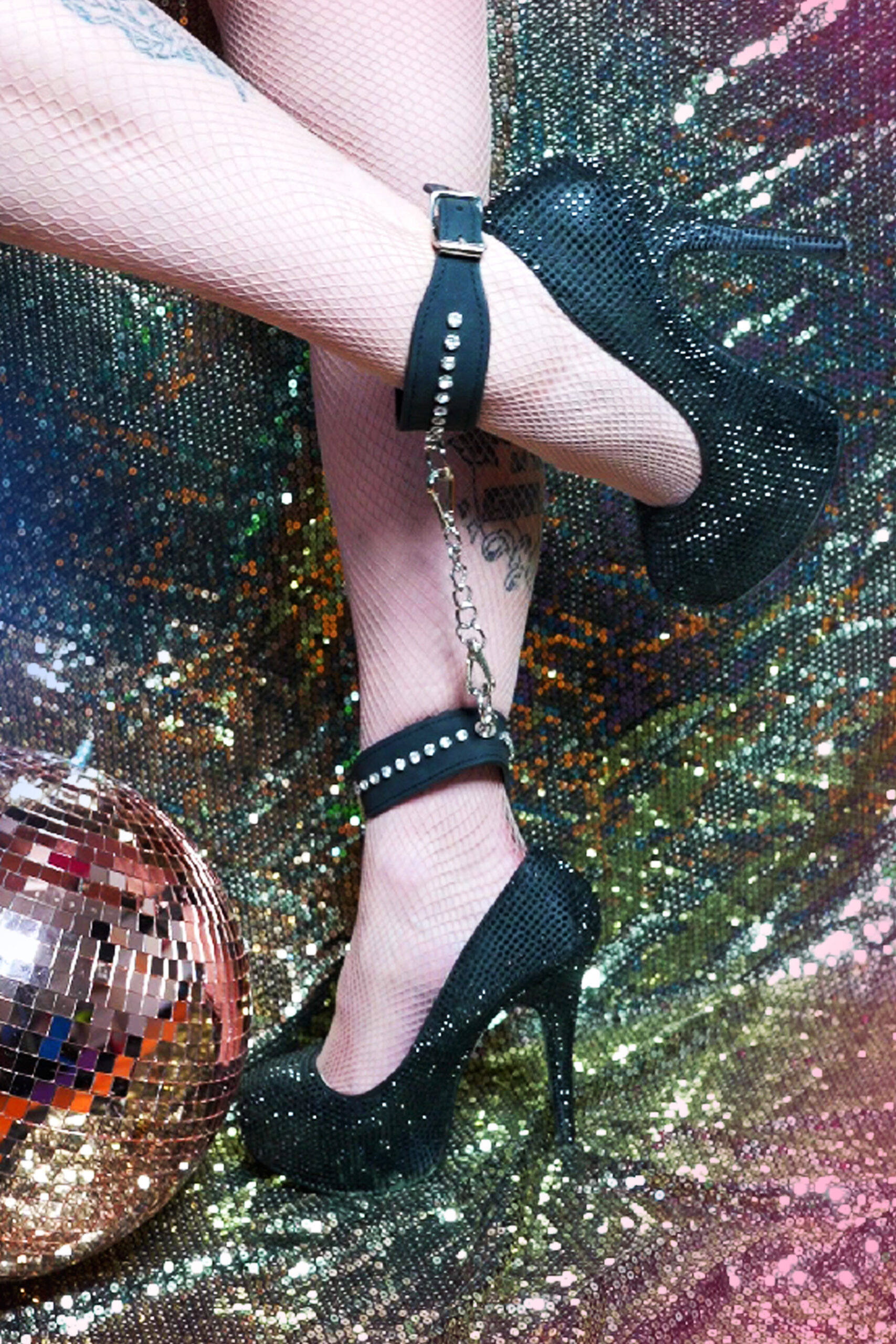Breaking Free From Breadcrumbing: What To Look For In Your Partner’s Behavior

Recognizing the Signs of Breadcrumbing
Breadcrumbing can be a confusing and hurtful experience, leaving you feeling strung along without any real commitment. Recognizing the subtle signs of this manipulative behavior is crucial for protecting your emotional well-being.
Inconsistent Communication
One telltale sign of breadcrumbing is inconsistent communication patterns. Someone who breadcrumb you might shower you with attention and affection one day, only to disappear for days or weeks without explanation the next. They might send sporadic texts or calls, often at inconvenient times, leaving you feeling like an afterthought.
Another red flag is a lack of genuine interest in your life. Breadcrumbers are typically more interested in maintaining their own needs and desires than in building a meaningful connection with you. They might ask superficial questions or steer conversations away from deeper topics, showing little desire to truly get to know you.
Look out for vague promises about the future. Breadcrumbers often dangle the possibility of something more, but they rarely follow through on their words. They might say things like “we should hang out soon” or “I really want to see you,” but these statements often remain unfulfilled.
Flirting and Teasing Without Follow-Through
Flirting and teasing without follow-through can also be signs of breadcrumbing. Someone who enjoys keeping you on the hook might playfully tease you or engage in flirtatious banter, but they won’t take any concrete steps to develop a romantic connection.
They may create an illusion of intimacy by sending suggestive messages or making compliments, but these actions are often superficial and lack substance. Remember, genuine interest is expressed through consistent effort and follow-through, not just fleeting gestures.
Unclear Intentions
Breadcrumbing can be a confusing and hurtful experience, leaving you feeling strung along without any real commitment. Recognizing the subtle signs of this manipulative behavior is crucial for protecting your emotional well-being.
One telltale sign of breadcrumbing is inconsistent communication patterns. Someone who breadcrumb you might shower you with attention and affection one day, only to disappear for days or weeks without explanation the next. They might send sporadic texts or calls, often at inconvenient times, leaving you feeling like an afterthought.
Another red flag is a lack of genuine interest in your life. Breadcrumbers are typically more interested in maintaining their own needs and desires than in building a meaningful connection with you. They might ask superficial questions or steer conversations away from deeper topics, showing little desire to truly get to know you.
Look out for vague promises about the future. Breadcrumbers often dangle the possibility of something more, but they rarely follow through on their words. They might say things like “we should hang out soon” or “I really want to see you,” but these statements often remain unfulfilled.
Flirting and teasing without follow-through can also be signs of breadcrumbing. Someone who enjoys keeping you on the hook might playfully tease you or engage in flirtatious banter, but they won’t take any concrete steps to develop a romantic connection.
They may create an illusion of intimacy by sending suggestive messages or making compliments, but these actions are often superficial and lack substance. Remember, genuine interest is expressed through consistent effort and follow-through, not just fleeting gestures.
Making Excuses
Breadcrumbing can be a confusing and hurtful experience, leaving you feeling strung along without any real commitment. Recognizing the subtle signs of this manipulative behavior is crucial for protecting your emotional well-being.
One telltale sign of breadcrumbing is inconsistent communication patterns. Someone who breadcrumb you might shower you with attention and affection one day, only to disappear for days or weeks without explanation the next. They might send sporadic texts or calls, often at inconvenient times, leaving you feeling like an afterthought.
Another red flag is a lack of genuine interest in your life. Breadcrumbers are typically more interested in maintaining their own needs and desires than in building a meaningful connection with you. They might ask superficial questions or steer conversations away from deeper topics, showing little desire to truly get to know you.
Look out for vague promises about the future. Breadcrumbers often dangle the possibility of something more, but they rarely follow through on their words. They might say things like “we should hang out soon” or “I really want to see you,” but these statements often remain unfulfilled.
Flirting and teasing without follow-through can also be signs of breadcrumbing. Someone who enjoys keeping you on the hook might playfully tease you or engage in flirtatious banter, but they won’t take any concrete steps to develop a romantic connection.
They may create an illusion of intimacy by sending suggestive messages or making compliments, but these actions are often superficial and lack substance. Remember, genuine interest is expressed through consistent effort and follow-through, not just fleeting gestures.
Understanding Why People Breadcrumb
Breadcrumbing can be a confusing and hurtful experience, leaving you feeling strung along without any real commitment. Recognizing the subtle signs of this manipulative behavior is crucial for protecting your emotional well-being.
Fear of Commitment
Fear of commitment often lies at the root of breadcrumbing. Individuals who engage in this behavior may be emotionally unavailable or hesitant to fully invest in a relationship.
They might enjoy the attention and validation that comes with flirting and maintaining connections without the responsibilities associated with a serious commitment. By offering sporadic glimpses of affection and hinting at future possibilities, breadcrumbers create a sense of hope and anticipation, keeping their targets entangled even if they have no intention of forming a lasting bond.
Understanding this underlying motivation can help you recognize breadcrumbing for what it is: a manipulative tactic designed to keep someone engaged without genuine emotional investment.
Ego Boost
Breadcrumbing can be confusing and hurtful, leaving you feeling strung along. Recognizing the signs of this manipulative behavior is key to protecting yourself emotionally.
One telltale sign is inconsistent communication patterns. Someone who breadcrumb you might shower you with attention one day, only to disappear for days or weeks without explanation the next. They might send sporadic texts or calls, often at inconvenient times, making you feel like an afterthought.
Another red flag is a lack of genuine interest in your life. Breadcrumbers are more interested in fulfilling their own needs and desires than building a meaningful connection with you. They may ask superficial questions or steer conversations away from deeper topics, showing little desire to truly get to know you.
Look out for vague promises about the future. Breadcrumbers often dangle the possibility of something more but rarely follow through on their words. They might say things like “we should hang out soon” or “I really want to see you,” but these statements often remain unfulfilled.
Flirting and teasing without follow-through can also be signs of breadcrumbing. Someone who enjoys keeping you on the hook might playfully tease you or engage in flirtatious banter, but they won’t take any concrete steps to develop a romantic connection.
They may create an illusion of intimacy by sending suggestive messages or making compliments, but these actions are often superficial and lack substance. Remember, genuine interest is expressed through consistent effort and follow-through, not just fleeting gestures.
Breadcrumbing can be a confusing and hurtful experience, leaving you feeling strung along without any real commitment. Recognizing the subtle signs of this manipulative behavior is crucial for protecting your emotional well-being.
Fear of commitment often lies at the root of breadcrumbing. Individuals who engage in this behavior may be emotionally unavailable or hesitant to fully invest in a relationship.
They might enjoy the attention and validation that comes with flirting and maintaining connections without the responsibilities associated with a serious commitment. By offering sporadic glimpses of affection and hinting at future possibilities, breadcrumbers create a sense of hope and anticipation, keeping their targets entangled even if they have no intention of forming a lasting bond.
Understanding this underlying motivation can help you recognize breadcrumbing for what it is: a manipulative tactic designed to keep someone engaged without genuine emotional investment.
Attention Seeking
Breadcrumbing often stems from an individual’s fear of commitment. They may enjoy the attention and validation that comes with flirting and casual connections without wanting the responsibilities of a serious relationship. By offering sporadic glimpses of affection and hinting at future possibilities, they create a sense of hope and anticipation, keeping their target engaged even if they have no intention of forming a lasting bond.
Breadcrumbing can be confusing and hurtful because it leaves you feeling strung along without any real commitment. It’s important to recognize the signs of this behavior to protect your emotional well-being.
Lack of Self-Awareness
Lack of self-awareness plays a significant role in breadcrumbing behavior. Individuals who engage in this pattern often lack insight into their own motivations and how their actions impact others.
They may not realize that their inconsistent communication and vague promises are hurtful or manipulative. They might genuinely believe they are being friendly or flirtatious, without recognizing the emotional toll it takes on the other person.
This lack of awareness can stem from various factors, such as fear of intimacy, a need for constant validation, or difficulty in expressing emotions authentically.
It’s important to remember that breadcrumbing is not necessarily intentional cruelty. Often, it’s a result of internal struggles and emotional immaturity rather than malicious intent.
Breaking Free From Breadcrumbing
Breadcrumbing can be a confusing and hurtful experience, leaving you feeling strung along without any real commitment. Recognizing the subtle signs of this manipulative behavior is crucial for protecting your emotional well-being.
Establish Boundaries
Breadcrumbing can be a confusing and hurtful experience, leaving you feeling strung along without any real commitment. Recognizing the subtle signs of this manipulative behavior is crucial for protecting your emotional well-being.
One telltale sign of breadcrumbing is inconsistent communication patterns. Someone who breadcrumb you might shower you with attention and affection one day, only to disappear for days or weeks without explanation the next. They might send sporadic texts or calls, often at inconvenient times, leaving you feeling like an afterthought.

Another red flag is a lack of genuine interest in your life. Breadcrumbers are typically more interested in maintaining their own needs and desires than in building a meaningful connection with you. They might ask superficial questions or steer conversations away from deeper topics, showing little desire to truly get to know you.
Look out for vague promises about the future. Breadcrumbers often dangle the possibility of something more, but they rarely follow through on their words. They might say things like “we should hang out soon” or “I really want to see you,” but these statements often remain unfulfilled.
Flirting and teasing without follow-through can also be signs of breadcrumbing. Someone who enjoys keeping you on the hook might playfully tease you or engage in flirtatious banter, but they won’t take any concrete steps to develop a romantic connection.
They may create an illusion of intimacy by sending suggestive messages or making compliments, but these actions are often superficial and lack substance. Remember, genuine interest is expressed through consistent effort and follow-through, not just fleeting gestures.
Breadcrumbing can be confusing and hurtful because it leaves you feeling strung along without any real commitment. It’s important to recognize the signs of this behavior to protect your emotional well-being.
One telltale sign is inconsistent communication patterns. Someone who breadcrumb you might shower you with attention one day, only to disappear for days or weeks without explanation the next. They might send sporadic texts or calls, often at inconvenient times, making you feel like an afterthought.
Another red flag is a lack of genuine interest in your life. Breadcrumbers are more interested in fulfilling their own needs and desires than building a meaningful connection with you. They may ask superficial questions or steer conversations away from deeper topics, showing little desire to truly get to know you.
Look out for vague promises about the future. Breadcrumbers often dangle the possibility of something more but rarely follow through on their words. They might say things like “we should hang out soon” or “I really want to see you,” but these statements often remain unfulfilled.
Flirting and teasing without follow-through can also be signs of breadcrumbing. Someone who enjoys keeping you on the hook might playfully tease you or engage in flirtatious banter, but they won’t take any concrete steps to develop a romantic connection.
They may create an illusion of intimacy by sending suggestive messages or making compliments, but these actions are often superficial and lack substance. ball lifter Remember, genuine interest is expressed through consistent effort and follow-through, not just fleeting gestures.
Establish strong boundaries to protect yourself from breadcrumbing behavior.
Clearly communicate your expectations for communication and commitment early on in any relationship. Let potential partners know that you value consistency, honesty, and meaningful connections.
If someone exhibits breadcrumbing behaviors, don’t hesitate to address it directly. Express how their actions make you feel and set firm limits on what you will tolerate.
If they continue to engage in these patterns, it’s best to distance yourself from the relationship.
Breadcrumbing can be a confusing and hurtful experience, leaving you feeling strung along without any real commitment. Recognizing the subtle signs of this manipulative behavior is crucial for protecting your emotional well-being.
Communicate Your Needs Clearly
Breadcrumbing can be a confusing and hurtful experience, leaving you feeling strung along without any real commitment. Recognizing the subtle signs of this manipulative behavior is crucial for protecting your emotional well-being.
One telltale sign of breadcrumbing is inconsistent communication patterns. Someone who breadcrumb you might shower you with attention and affection one day, only to disappear for days or weeks without explanation the next. They might send sporadic texts or calls, often at inconvenient times, leaving you feeling like an afterthought.
- Another red flag is a lack of genuine interest in your life. Breadcrumbers are typically more interested in maintaining their own needs and desires than in building a meaningful connection with you.
- Look out for vague promises about the future. Breadcrumbers often dangle the possibility of something more, but they rarely follow through on their words.
- Flirting and teasing without follow-through can also be signs of breadcrumbing. Someone who enjoys keeping you on the hook might playfully tease you or engage in flirtatious banter, but they won’t take any concrete steps to develop a romantic connection.
They may create an illusion of intimacy by sending suggestive messages or making compliments, but these actions are often superficial and lack substance. Remember, genuine interest is expressed through consistent effort and follow-through, not just fleeting gestures.
Breadcrumbing can be confusing and hurtful because it leaves you feeling strung along without any real commitment. It’s important to recognize the signs of this behavior to protect your emotional well-being.
One telltale sign is inconsistent communication patterns. Someone who breadcrumb you might shower you with attention one day, only to disappear for days or weeks without explanation the next. They might send sporadic texts or calls, often at inconvenient times, making you feel like an afterthought.
Another red flag is a lack of genuine interest in your life. Breadcrumbers are more interested in fulfilling their own needs and desires than building a meaningful connection with you. They may ask superficial questions or steer conversations away from deeper topics, showing little desire to truly get to know you.
Look out for vague promises about the future. Breadcrumbers often dangle the possibility of something more but rarely follow through on their words. They might say things like “we should hang out soon” or “I really want to see you,” but these statements often remain unfulfilled.
Flirting and teasing without follow-through can also be signs of breadcrumbing. Someone who enjoys keeping you on the hook might playfully tease you or engage in flirtatious banter, but they won’t take any concrete steps to develop a romantic connection.
They may create an illusion of intimacy by sending suggestive messages or making compliments, but these actions are often superficial and lack substance. Remember, genuine interest is expressed through consistent effort and follow-through, not just fleeting gestures.
Breadcrumbing can be a confusing and hurtful experience, leaving you feeling strung along without any real commitment. Recognizing the subtle signs of this manipulative behavior is crucial for protecting your emotional well-being.
Fear of commitment often lies at the root of breadcrumbing. Individuals who engage in this behavior may be emotionally unavailable or hesitant to fully invest in a relationship.
They might enjoy the attention and validation that comes with flirting and maintaining connections without the responsibilities associated with a serious commitment. By offering sporadic glimpses of affection and hinting at future possibilities, breadcrumbers create a sense of hope and anticipation, keeping their targets entangled even if they have no intention of forming a lasting bond.
Understanding this underlying motivation can help you recognize breadcrumbing for what it is: a manipulative tactic designed to keep someone engaged without genuine emotional investment.
Breadcrumbing often stems from an individual’s fear of commitment. They may enjoy the attention and validation that comes with flirting and casual connections without wanting the responsibilities of a serious relationship. By offering sporadic glimpses of affection and hinting at future possibilities, they create a sense of hope and anticipation, keeping their target engaged even if they have no intention of forming a lasting bond.
Breadcrumbing can be confusing and hurtful because it leaves you feeling strung along without any real commitment. It’s important to recognize the signs of this behavior to protect your emotional well-being.
Lack of self-awareness plays a significant role in breadcrumbing behavior. Individuals who engage in this pattern often lack insight into their own motivations and how their actions impact others.
They may not realize that their inconsistent communication and vague promises are hurtful or manipulative. They might genuinely believe they are being friendly or flirtatious, without recognizing the emotional toll it takes on the other person.
This lack of awareness can stem from various factors, such as fear of intimacy, a need for constant validation, or difficulty in expressing emotions authentically.
It’s important to remember that breadcrumbing is not necessarily intentional cruelty. Often, it’s a result of internal struggles and emotional immaturity rather than malicious intent.

Don’t Chase or Plead
Breadcrumbing can be a confusing and hurtful experience, leaving you feeling strung along without any real commitment. Recognizing the subtle signs of this manipulative behavior is crucial for protecting your emotional well-being.
- Inconsistent Communication: Someone who breadcrumbes you might shower you with attention one day, only to disappear for days or weeks without explanation the next. They might send sporadic texts or calls, often at inconvenient times, leaving you feeling like an afterthought.
- Lack of Genuine Interest: Breadcrumbers are typically more interested in maintaining their own needs and desires than in building a meaningful connection with you. They may ask superficial questions or steer conversations away from deeper topics, showing little desire to truly get to know you.
- Vague Promises:** Breadcrumbers often dangle the possibility of something more but rarely follow through on their words. They might say things like “we should hang out soon” or “I really want to see you,” but these statements often remain unfulfilled.
- Flirting Without Follow-Through: Someone who enjoys keeping you on the hook might playfully tease you or engage in flirtatious banter, but they won’t take any concrete steps to develop a romantic connection.
These individuals may create an illusion of intimacy by sending suggestive messages or making compliments, but these actions are often superficial and lack substance. Remember, genuine interest is expressed through consistent how to make a guy cum effort and follow-through, not just fleeting gestures.
Breadcrumbing can be confusing and hurtful because it leaves you feeling strung along without any real commitment. It’s important to recognize the signs of this behavior to protect your emotional well-being.
Fear of commitment often lies at the root of breadcrumbing. Individuals who engage in this behavior may be emotionally unavailable or hesitant to fully invest in a relationship.
They might enjoy the attention and validation that comes with flirting and maintaining connections without the responsibilities associated with a serious commitment. By offering sporadic glimpses of affection and hinting at future possibilities, breadcrumbers create a sense of hope and anticipation, keeping their targets entangled even if they have no intention of forming a lasting bond.
Understanding this underlying motivation can help you recognize breadcrumbing for what it is: a manipulative tactic designed to keep someone engaged without genuine emotional investment.
Breadcrumbing often stems from an individual’s fear of commitment. They may enjoy the attention and validation that comes with flirting and casual connections without wanting the responsibilities of a serious relationship. By offering sporadic glimpses of affection and hinting at future possibilities, they create a sense of hope and anticipation, keeping their target engaged even if they have no intention of forming a lasting bond.
Breadcrumbing can be confusing and hurtful because it leaves you feeling strung along without any real commitment. It’s important to recognize the signs of this behavior to protect your emotional well-being.
Lack of self-awareness plays a significant role in breadcrumbing behavior. Individuals who engage in this pattern often lack insight into their own motivations and how their actions impact others.
They may not realize that their inconsistent communication and vague promises are hurtful or manipulative. They might genuinely believe they are being friendly or flirtatious, without recognizing the emotional toll it takes on the other person.
This lack of awareness can stem from various factors, such as fear of intimacy, a need for constant validation, or difficulty in expressing emotions authentically.
It’s important to remember that breadcrumbing is not necessarily intentional cruelty. Often, it’s a result of internal struggles and emotional immaturity rather than malicious intent.
Focus on Your Self-Worth
Breadcrumbing can be confusing and hurtful because it leaves you feeling strung along without any real commitment. It’s important to recognize the signs of this behavior to protect your emotional well-being.
- Inconsistent Communication: Someone who breadcrumbes you might shower you with attention one day, only to disappear for days or weeks without explanation the next. They might send sporadic texts or calls, often at inconvenient times, leaving you feeling like an afterthought.
- Lack of Genuine Interest: Breadcrumbers are typically more interested in maintaining their own needs and desires than in building a meaningful connection with you. They may ask superficial questions or steer conversations away from deeper topics, showing little desire to truly get to know you.
- Vague Promises:** Breadcrumbers often dangle the possibility of something more but rarely follow through on their words. They might say things like “we should hang out soon” or “I really want to see you,” but these statements often remain unfulfilled.
- Flirting Without Follow-Through: Someone who enjoys keeping you on the hook might playfully tease you or engage in flirtatious banter, but they won’t take any concrete steps to develop a romantic connection.
These individuals may create an illusion of intimacy by sending suggestive messages or making compliments, but these actions are often superficial and lack substance. Remember, genuine interest is expressed through consistent effort and follow-through, not just fleeting gestures.
Breadcrumbing can be confusing and hurtful because it leaves you feeling strung along without any real commitment. It’s important to recognize the signs of this behavior to protect your emotional well-being.
Focus on building healthy relationships with people who value open communication, honesty, and respect. Surround yourself with individuals who make you feel valued, appreciated, and supported.
Recognize your own worthiness of love and commitment. Don’t settle for less than you deserve. You deserve a partner who is invested in building a meaningful connection with you.
Finding Healthy Relationships
Finding healthy relationships requires recognizing the signs of unhealthy patterns like breadcrumbing. Breadcrumbing occurs when someone gives you just enough attention to keep you interested but never commits to anything real.
They might shower you with affection one day, then disappear for days or weeks without explanation. They’ll often make vague promises about the future but rarely follow through. Look out for inconsistencies in their communication and a lack of genuine interest in your life. Remember, healthy relationships are built on open communication, honesty, and mutual respect.
Look for Reciprocity
Finding healthy relationships requires recognizing the signs of unhealthy patterns like breadcrumbing. Breadcrumbing occurs when someone gives you just enough attention to keep you interested but never commits to anything real.
They might shower you with affection one day, then disappear for days or weeks without explanation. They’ll often make vague promises about the future but rarely follow through. Look out for inconsistencies in their communication and a lack of genuine interest in your life.
Here are some signs to watch for:
- Inconsistent Communication: You find yourself constantly checking your phone, hoping for a message that may or may not come.
- Lack of Follow-Through: Dates get canceled at the last minute, plans are made but never solidify, and promises are made but never kept.
- Superficial Interest: They ask surface-level questions and seem disinterested in getting to know you on a deeper level.
- Vague About the Future: They talk about “hanging out sometime” or “seeing where things go,” but never make concrete plans or express clear intentions.
Remember, healthy relationships are built on open communication, honesty, and mutual respect. You deserve a partner who is invested in building a meaningful connection with you.
If someone consistently exhibits these signs, it’s important to distance yourself from the relationship. Don’t waste your time and energy on someone who isn’t willing to reciprocate your feelings or invest in a genuine connection.

Seek Open and Honest Communication
Finding healthy relationships starts with recognizing red flags like breadcrumbing. Breadcrumbing is when someone gives you just enough attention to keep you hooked but never commits to anything real.
Think of it like being left crumbs on the trail – they might seem promising at first, leading you on a journey, but ultimately lead nowhere substantial. Here’s what to look out for:
Inconsistent Communication: You find yourself constantly checking your phone, hoping for a message that may or may not come.
Lack of Follow-Through: Dates get canceled at the last minute, plans are made but never solidify, and promises are made but never kept.
Superficial Interest: They ask surface-level questions and seem disinterested in getting to know you on a deeper level.
Vague About the Future: They talk about “hanging out sometime” or “seeing where things go,” but never make concrete plans or express clear intentions.
Remember, healthy relationships thrive on open communication, honesty, and mutual respect. You deserve a partner who is excited to build something real with you, not someone who keeps you dangling in the uncertainty of breadcrumbs.
If you find yourself consistently dealing with these patterns, it’s time to step back. Don’t waste your precious time and energy on someone who isn’t willing to reciprocate your feelings or invest in a genuine connection. You deserve better!
Pay Attention to Red Flags
Finding healthy relationships requires recognizing the signs of unhealthy patterns like breadcrumbing. Breadcrumbing occurs when someone gives you just enough attention to keep you interested but never commits to anything real.
They might shower you with affection one day, then disappear for days or weeks without explanation. They’ll often make vague promises about the future but rarely follow through. Look out for inconsistencies in their communication and a lack of genuine interest in your life. Remember, healthy relationships are built on open communication, honesty, and mutual respect. You deserve a partner who is invested in building a meaningful connection with you.
Here are some signs to watch for:
- Inconsistent Communication: You find yourself constantly checking your phone, hoping for a message that may or may not come.
- Lack of Follow-Through: Dates get canceled at the last minute, plans are made but never solidify, and promises are made but never kept.
- Superficial Interest: They ask surface-level questions and seem disinterested in getting to know you on a deeper level.
- Vague About the Future: They talk about “hanging out sometime” or “seeing where things go,” but never make concrete plans or express clear intentions.
If someone consistently exhibits these signs, it’s important to distance yourself from the relationship. Don’t waste your time and energy on someone who isn’t willing to reciprocate your feelings or invest in a genuine connection.
Discover everything this blog covers
Explore this opinion in detail



















